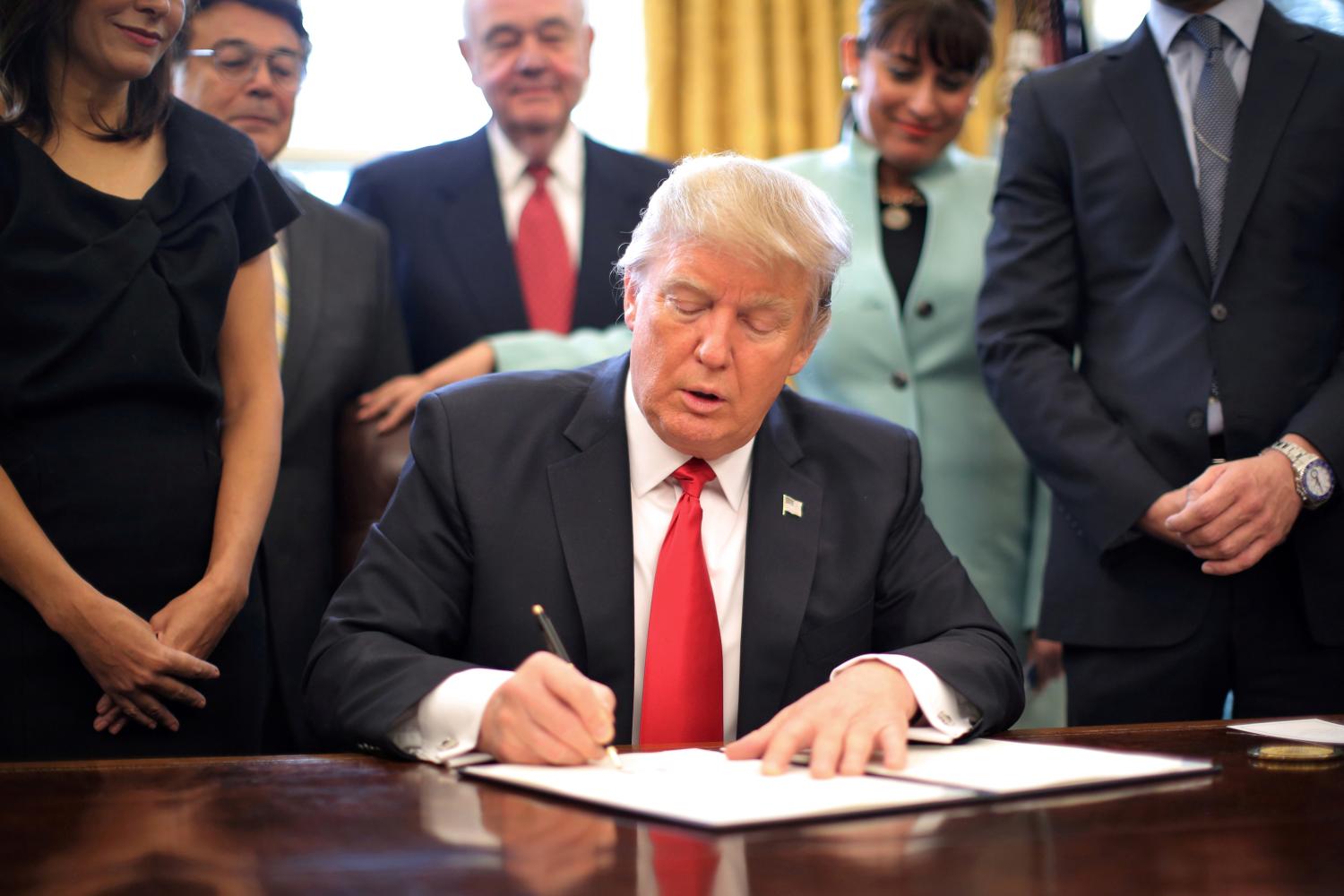This report is part of the Series on Regulatory Process and Perspective and was produced by the Brookings Center on Regulation and Markets. The authors did not receive financial support from any firm or person for this article or from any firm or person with a financial or political interest in this article. None of the authors are currently an officer, director, or board member of any organization with a financial or political interest in this article.
Executive Order (EO) 13771, known as the “regulatory two-for-one” EO, imposed new constraints on executive branch regulatory agencies, directing them to: (1) to cut two existing rules for each new rule issued and (2) offset any costs imposed by new rules while operating under a regulatory cost cap. The Office of Information and Regulatory Affairs (OIRA), part of the Office of Management and Budget (OMB), is responsible for implementing this EO and reporting on its progress. OMB has issued Regulatory Reform Reports for fiscal year (FY) 2017 and FY 2018. The fiscal year for 2019 ended recently on September 30, 2019. While we await the latest report, this article explains OMB’s current accounting methodology, gleaned from OMB’s guidance and other public documents, and highlights challenges of reporting agency performance in implementing EO 13771. It also contains our recommendations to improve the accuracy and accountability of both OMB’s annual reporting and individual agency actions.
The FY 2017 report was met with some skepticism, in part because of how it calculated its finding that executive regulatory agencies under the Trump administration[1] finalized 22 deregulatory actions for every one regulatory action, saving an estimated $8.1 billion in regulatory costs. To compute ratios the FY 2017 report compared total deregulatory actions to total significant regulatory actions. As others have noted, more types of actions count as deregulatory than as regulatory and not all actions are of comparable magnitude. While OIRA’s guidance implementing EO 13771 was fairly transparent about these definitional choices, and there are some good reasons for them, these choices nevertheless undercut the meaningfulness of the ratio. We discuss this more below.
OIRA made some improvements in its FY 2018 report. It presented ratios in two ways. The first way captures all deregulatory actions and all significant regulatory actions; defining “deregulatory” and “regulatory” the same way as in the FY 2017 report. The second way narrows the counts to those deregulatory and regulatory actions that were “significant” under EO 12866. This narrower approach is closer to an apples-to-apples comparison, which is more useful when trying to weigh the deregulatory and regulatory actions against each other. OIRA also added information to show which specific actions were “significant” under EO 12866, making the inputs into the counts more transparent. Nevertheless, these changes have not immunized these counts from continued criticism.
Scholars also critique the administration’s approach to reporting cost savings from implementation of EO 13771—namely for the choice to estimate the cost savings produced by deregulatory actions without also assessing the foregone benefits. This reporting choice, however, flows from EO 13771 itself, which only requires agencies to eliminate regulatory costs to offset the costs of new regulations. Regulatory impact analyses of individual regulations continue to assess both benefits and costs, as EO 12866 requires. EO 12866 also directs agencies to base all actions on a determination that their benefits justify their costs.[2] For the purposes of this article, we limit ourselves to analysis and recommendations for implementing EO 13771 based on its current provisions.
Our article proceeds as follows. Part I details the OIRA guidance to agencies on what “counts” as an EO 13771 regulatory or deregulatory action. Part II describes OIRA’s accounting methodology for estimating agency cost savings. Part III elaborates on analytical concerns that flow from the administration’s current approach for estimating “counts” and “cost savings” and offers several recommendations for improving the content of agency actions and OIRA’s annual reporting on EO 13771.








